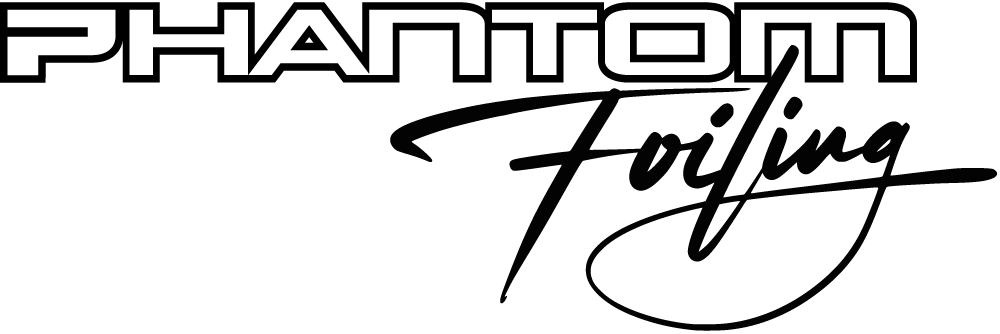How to Choose Your Rear Wing and Fuselage
Rear Wing Options:
Choose based on your desired balance of speed, control, and stability:
RW 100 : Minimal surface area for maximum glide and top-end speed. Ideal for expert riders seeking a loose, highly reactive feel in powerful conditions.
RW 120 : The most versatile choice. Offers a balanced mix of stability and maneuverability for a smooth, intuitive ride in all conditions.
RW 140 : Prioritizes control, low-end lift, and comfort—perfect for long-distance runs, heavier riders, or rougher ocean states, while still delivering solid performance.
Fuselage Options:
Pick your fuselage based on ride feel, stiffness, and technical preference:
Material:
Aluminum : Durable and cost-effective, ideal for everyday use.
Titanium : Lightweight, ultra-stiff, and corrosion-resistant for maximum responsiveness and longevity.
Size:
S (Short) : Enhances maneuverability and pumping cadence. Best for tight, reactive handling.
M (Medium) : All-around performance. The most balanced and versatile setup.
L (Long) : Delivers superior pitch stability and straight-line tracking—ideal for high-speed runs and open ocean glide.
Technical Deep Dive
Fuselage integrated into the foil flow
The Hurricane’s front wing features a unique star-shaped dihedral junction beneath the fuselage, inspired by America’s Cup rudders. This design reduces drag by minimizing interference between the wing and fuselage, increases the front wing’s immersion for better lift, and shifts the wake below the rear stabilizer to prevent turbulence and instability. The relatively flat dihedral enhances roll control, while the tip shape reduces ventilation during sharp turns.
From a side view, the airflow clearly shows how the fuselage is seamlessly integrated into the foil’s flow, minimizing turbulence and drag for smoother transitions and stable lift.
Specific Dihedral design of the foil
The Hurricane foils feature a carefully engineered anhedral geometry that enhances both control and stability. Unlike dihedral configurations, where the wings angle upward, our downward-angled anhedral wings offer more reactive handling and a steadier feel even in faster, more powered conditions. The precisely designed taper and sweepback angles promote efficient spanwise load distribution, boosting hydrodynamic performance. This shape also increases the foil’s immersion depth, reducing wake interference on the elevator for smoother pitch control and greater ride comfort. Overall, this specific anhedral design is key to delivering a smooth, forgiving, and highly responsive foil experience.
Titanium M6 Fastening Hardware
The Hurricane foils use M6 titanium hardware, prized for its outstanding corrosion resistance and strong torsional strength. This provides durable, reliable fastening, crucial for preserving foil integrity in tough marine environments.
Carbon Construction Details
The wings, stabilizers, and mast are all constructed using Ultra High Modulus Pre-Preg Carbon, which is nearly twice as stiff as standard M40J high-modulus carbon, allowing for thinner, more hydrodynamic profiles without compromising rigidity. The carbon weave is distinct due to specialized layering and orientation techniques designed for high-load resistance and optimal energy transfer.
Two Types of Fuselage Materials: Aluminum and Titanium
Two fuselage materials are offered to meet varying performance and durability requirements.
- Aluminum provides a reliable and cost-effective option.
- Titanium offers superior stiffness, corrosion resistance, and is better suited for high-performance applications.
Both materials are fully compatible with the Hurricane foil range.
Tip Design
The tips feature a zero-camber section with a smooth, blended transition instead of a sharp cutoff. This design lessens the intensity of the tip vortex, reducing induced drag and boosting overall foil efficiency. Lower loading at the tip also minimizes the risk of ventilation when piercing the water surface, enhancing reliability in choppy or variable conditions. Additionally, the trailing edge near the tip is subtly reinforced to improve resistance to impacts and cracking, addressing a common durability weak point. Together, these design elements reduce induced drag, lower ventilation risk, and increase durability in critical areas.
Front Wing Positioning: Consistent Lift Center
The front wing’s position relative to the fuselage has been precisely calibrated to keep the center of lift consistent across all sizes, from the 540 cm² up to the 1100 cm² wing. This eliminates the need to adjust the mast position when changing wings, ensuring consistent handling and balanced performance.
Foil Profile Variations by size
The 550 and 630 foils feature distinct profiles compared to the 730, 900, and 1100 models. This difference arises from the fact that smaller foils operate within a different flow regime. Their shorter chord lengths result in a higher proportion of laminar flow, which the design capitalizes on to increase efficiency. By tailoring the profiles to each size category, the performance is optimized for the specific hydrodynamic conditions each foil encounters.
Smaller chord lengths are also more sensitive to manufacturing tolerances. To account for this, the profiles of the 550 and 630 are engineered to be more robust and tolerant of slight shape variations, ensuring consistent and reliable performance even with minor production deviations.
Segmented Foil Profiles: Root and Tip Sections
The foil is primarily divided into root and tip sections, each engineered with specific objectives:
Root section: Focuses on maximizing performance, benefiting from cleaner, less disturbed flow. On high aspect ratio wings, this section is also thicker to provide the necessary structural strength.
Tip section: Designed for greater tolerance and robustness against sudden angle-of-attack changes caused by pumping or waves. It carries less load than the root to reduce tip vortex strength, thereby lowering induced drag.
This segmentation improves foil handling during maneuvers and enhances gliding efficiency by reducing drag and increasing overall stability.




















